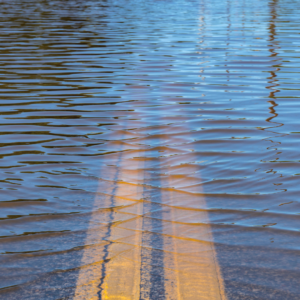 Floods are the most common natural disaster in the United States. The Pew Charitable Trust recently reported that nearly half of U.S. states are expected to experience significant flood events during the spring of 2020. In just the past few years, major flood disasters such as Hurricanes Harvey, Irma, Florence, and flood events in the Midwest have exhausted many response resources.
Floods are the most common natural disaster in the United States. The Pew Charitable Trust recently reported that nearly half of U.S. states are expected to experience significant flood events during the spring of 2020. In just the past few years, major flood disasters such as Hurricanes Harvey, Irma, Florence, and flood events in the Midwest have exhausted many response resources.
Covid-19
Now, with the COVID-19 outbreak the world faces an unprecedented threat to human health and safety. COVID-19, like any disaster, also threatens our economic well-being, as unemployment soars and an effective vaccine could be months, even years away. As a result, people who live in flood-prone areas must now consider the very real possibility of facing multiple and concurrent disasters.
In FEMA’s most recent strategic plan, former FEMA Administrator Brock Long remarked, “We need to help individuals and families understand their personal roles in preparing for disasters and taking action – they are our true first responders.” During the COVID-19 pandemic, our personal resources, preparedness and resiliency will determine how our community as a whole recovers.
April, a difficult month for many in 2020, has long been known as Financial Literacy Month, which stresses the importance of financial resilience in the face of adversity. If a natural disaster does hit, it is critically important to ensure we have the financial resources to weather and fully recover from such an event.
Insurance Coverage
With many of us quarantined at home, we have a unique opportunity to review our insurance coverages, particularly home and flood. Many remain unaware that their homeowners’ policy does not contain flood coverage. For those impacted by flood who do not have flood insurance, there are some limited federal resources available. For example, SBA loans and Hazard Mitigation Grant Program (HMGP) dollars become available when there is a presidentially declared disaster. More recently, the 203K loan program, which is a home renovation loan, has been used as a tool to perform mitigation activities such as elevating a home. Traditional lending is also available, and traditional loan to value ratios can determine its availability to an individual. A last resort would be to wait for individual assistance after a disaster from FEMA. But following Hurricane Harvey, that assistance averaged only about $6,000 per household.
![]() Flood Insurance continues to be your best financial recovery tool. Flood insurance is available any time, and with the right product, can be relatively inexpensive. Private flood insurance, as an alternative to the National Flood Insurance Program (NFIP), in some cases can offer more coverage with lower cost. To help lower NFIP flood premiums and flood risk, some communities have participated in the Community Rating System (CRS). CRS enables a community to reduce the cost of flood insurance for all of its citizens, provided the community performs certain risk reduction actions.
Flood Insurance continues to be your best financial recovery tool. Flood insurance is available any time, and with the right product, can be relatively inexpensive. Private flood insurance, as an alternative to the National Flood Insurance Program (NFIP), in some cases can offer more coverage with lower cost. To help lower NFIP flood premiums and flood risk, some communities have participated in the Community Rating System (CRS). CRS enables a community to reduce the cost of flood insurance for all of its citizens, provided the community performs certain risk reduction actions.
Risk Awareness
Overall risk awareness and disaster prevention are paramount during this time. Just because we socially distance from each other, it does not mean that floods and other natural disasters will “distance” as well. Understanding evacuation routes, having a personal emergency kits, and knowing which disasters are most likely to strike are simple things that help lessen a disasters impact. Looking around your home and, for example, moving valuables out of the basement to prevent flood damage or securing outdoor items that can turn into projectiles and debris, can lessen damage. Making sure our basement sump pumps work and having backups and directing drainage away from our homes lessens the chance of a flood claim.
In an effort to keep our nation insured for floods, in March the NFIP announced that a flood policy with an expiration date between Feb. 13, 2020 and June 15, 2020 would have an extended grace period for payment from 30 days to 120 days. Additionally, the NFIP is offering the policyholder the option of remote claims handling as an alternative to in-person claims handling.
We need to maintain our physical and emotional health during these unprecedented times, but we also need to maintain our awareness that floods and other disasters still happen. The inevitability of concurrent disasters throughout the U.S. in this time of pandemic, will vitally threaten our response and recovery resources. However, if we all work together by utilizing all available resources and recognizing our flood risk, we can be more resilient as a community and as a nation.
Dave Nommensen
Vice President | Personal Insurance
 Dave is a Vice President in the Personal Insurance division at RogersGray. Living and residing on Cape Cod, Dave serves many of RG’s finest clients in the Upper Cape region and on Martha’s Vineyard. Dave’s approach to working with a new client is simple… he listens.
Dave is a Vice President in the Personal Insurance division at RogersGray. Living and residing on Cape Cod, Dave serves many of RG’s finest clients in the Upper Cape region and on Martha’s Vineyard. Dave’s approach to working with a new client is simple… he listens.
Dave believes that as a dedicated insurance advisor it is imperative to take the time to listen to client’s concerns and to what is important to them in order to properly safeguard their property and family. Dave resides in Cotuit with his wife and their children. You can connect with Dave on LinkedIn or by email.
